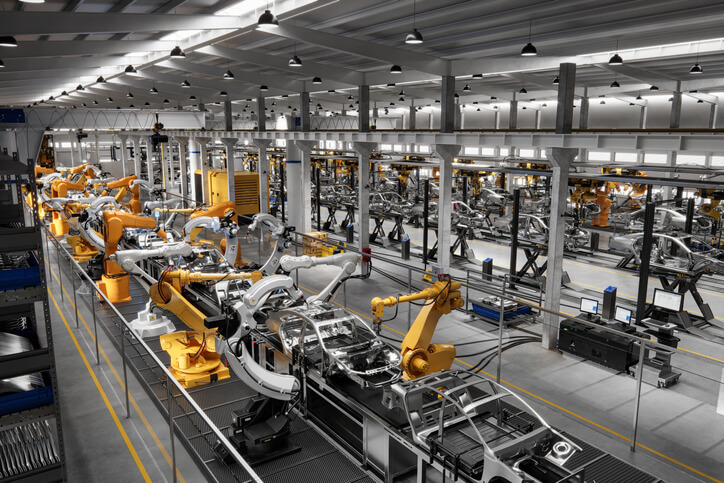A brief overview of industry
____________________
In this article:
____________________
Terms like industry 4.0 and 5.0 are thrown around regularly these days. IoT, big data, and automation are still opening new possibilities for users and designers, while AI, machine learning, and cobots are already starting to revolutionize how we think of things. To get a better grasp of the industry today, we have to understand the process of transition we’re experiencing, and where in the balance of things we can find ourselves as engineers and designers today.
While some have even ventured to talk about industry 6.0, we believe it’s important to understand where we stand, where we’re coming from and properly define where we’re going to make educated forecasts and innovate with confidence.
As we navigate through yet another industry revolution, here’s what we can learn from the past and present, to lead the market today, and anticipate the innovations of tomorrow.
Industry from A-to-Z (or 1.0 to 5.0)
Before we go forward, let’s take a step back and see what we can learn from history’s biggest industry transformations.

- Industry 1.0
- The original industrial revolution. Steam and coal powered machines boost manufacturing processes, increasing productivity dramatically, revolutionizing industry, transportation, and the way we think about work.
- Industry 2.0
- Electrical technology and petroleum come into the picture. This era was marked by the development of new technologies such as the electric power grid, mass production techniques like the production line, and the internal combustion engine, which transformed manufacturing processes and enabled the creation of new industries such as automobiles, chemicals, and telecommunications.
- Industry 3.0
- Computers enter the workforce. Programmable Logic Controllers, Robots, ICTs (In-circuit test) electronics, and other Information Technologies start a new industry revolution. Internet access and renewable energies are introduced, sparking a new era of manufacturing processes, automation, and globalization.
- Industry 4.0
- Industry 4.0 begins in the second decade of the 21st century, blurring the lines between the physical and digital world. IoT, Robotics, smart machines, smart buildings, drones, cloud computing, and cognitive computing integrate the role of technology into everyday life. Automation is hyper evolving, reducing the need for human intervention, resulting in seamless interactions that nothing short of augment reality.
- Industry 5.0
- While the term is still in its early stages, we can already get a glimmer of where the industry is going. Industry 4.0, as 5.0 were both coined around 2015, however, while the former has since matured and defined, the latter has evolved and migrated, and is still to some extent, a proposed term. Nevertheless, we can nowadays find definitions for industry 5.0 the next step on industrial development. Industry 5.0 emphasizes the collaboration of humans and machines for greater efficiency, precision, and safety. With this upcoming phase, humans will be able to tackle more complex duties as machines handle repetitive and dangerous tasks. AI, automation, quantum computing, generative AI and IoT will become important tools to amplify creativity and innovation. And if you’ve been anywhere near a screen in the last year, you might even say it’s already happening.
YOU MIGHT ALSO LIKE: Energy Storage 2023: State of the Art and Trends for the Future
So, in terms of industry… where do we stand?
While industry 4.0 is still relatively young, its successor is already taking its first steps. The pace of this succession seems accelerated, and some may argue about the clarity of the transition.
The truth, however, indicates two things.
First, if we look back at history, we can see enough evidence of the exponential speed of technological evolution.
Second, transitioning from one industry to the other means a lot of things change… however, some carry over, especially in the early stages of the new one, as the ground is still being set and definitions are being established.
So, in a nutshell:
Given that the fourth industrial revolution is still ongoing, it’s safe to say that we are currently in the Industry 4.0 phase. However, it’s worth noting that the boundaries between these stages are not always clear-cut, and some industries and regions may be at different stages of the industrial revolution.

7 defining features of Industry 4.0
- Internet of Things (IoT): This refers to the network of physical devices, vehicles, and other objects connected through smart technology, embedded with sensors and connectivity software and hardware, which enables them to share data between them, resulting in seamless interactions between separate devices for the everyday consumer.
- Big data: Industry 4.0 relies heavily on the collection and analysis of data to make informed predictions, optimize processes, and personalize user interactions in the digital world.
- Automation: Machines, drones, robots, and other automated systems to perform tasks that were previously done by humans. This is an overlapping topic with industry 5.0 and one that will probably carry through as the focus shifts from the search for greater efficiency, precision, and cost savings, to the maximization of skills and creativity.
- Artificial intelligence (AI): AI has been buzzing for at least the past year more than ever. While this AI craze may be one of the defining factors of the transition into industry 5.0, it is still a part of the industry 4.0 period we are experiencing today. AI tools, as they continue to develop and being perfected, have been critical to industry 4.0 for data analysis and automation.
- Cybersecurity: As more systems become connected and reliant on data, cybersecurity becomes increasingly important to protect against hacks, power outages, and other cyberthreats.
- Cloud computing: Cloud-based solutions provide flexibility and portability for storage and access to data as well as for running software applications.
- Augmented and virtual reality: AR and VR technologies are used in Industry 4.0 to integrate the digital and physical world, resulting in enhanced training, designs, arts, tourism, and maintenance processes among others.
4 successful examples of industry 4.0 implementation
- Predictive maintenance: Many manufacturing companies are using Industry 4.0 technologies like IoT sensors and big data analytics to implement predictive maintenance. This involves using real-time data to identify when equipment is likely to fail, allowing maintenance teams to perform maintenance before a breakdown occurs. This has the potential to reduce downtime, improve equipment efficiency, and save costs. For example, Rolls-Royce uses IoT sensors in its aircraft engines to predict maintenance needs and improve performance.
- Smart logistics: The use of Industry 4.0 technologies in logistics can help companies optimize their supply chains and reduce costs. For example, DHL has implemented smart logistics solutions that use IoT sensors to track and monitor shipments, optimize routes, and improve delivery times.
- Digital twins: A digital twin is a virtual replica of a physical product, process, or system that can be used for simulation and analysis. Digital twins can be used in Industry 4.0 to improve product design, optimize production processes, and reduce downtime. For example, General Electric uses digital twins of its gas turbines to monitor performance and predict maintenance needs.
- Collaborative robots: Collaborative robots, or “cobots,” are robots that work alongside humans to perform tasks. In Industry 4.0, cobots can be used to improve efficiency and safety in manufacturing processes. For example, BMW uses cobots in its factories to assist human workers with tasks like painting and welding.
YOU MIGHT ALSO LIKE: Smart grid and smart meter: business trends and opportunities
What’s the difference between industry 4.0 and 5.0?
Industry 4.0 and Industry 5.0 are both focused on the integration of the physical and digital world using advanced technologies to transform industries. Both eras of the industry are characterized by providing tools that result in seamless interactions with end users, but they differ in their approach.
Industry 4.0 is focused on the automation and optimization of manufacturing processes through technologies like IoT, big data, and artificial intelligence.
Industry 5.0, on the other hand, emphasizes human-machine collaboration, where humans and machines work together to create new products, services, and business models that leverage the unique strengths of both.
Like all industry revolutions, one can’t happen without the other, and the technology developed in one, paired with historical context, is what leads to the next one. In other words, industry 5.0 is an effect of industry 4.0, as it will, in turn, be the cause for industry 6.0.

How to carry over into industry 5.0
As we’ve covered, Industry 5.0 is proving to have a focus on human-machine collaboration. Humans and machines work together to create new products, services, and business models that could not be achieved by either one alone. This collaboration will leverage the unique strengths of humans and machines, with machines providing the ability to process vast amounts of data and perform tasks with high accuracy, while humans bring creativity, intuition, and emotional intelligence to the table.
These early stages are showing potential and space for innovation in:
- Customization: Human creativity and understanding of context is paired with machines’ capacities to create more personalized products and services that better meet the needs of individual customers, rather than mass produced products that are proving to be less appealing for younger generations.
- Flexibility: Human-machine collaboration could enable companies to be more agile and responsive to changing market demands and customer needs. While educated predictions form a big part of the defining factors of industry 4.0, recent events like the pandemic crisis proved that industry needs to find ways to diversify, become more flexible, and in a way, to be prepared for the unexpected.
- Sustainability: By leveraging human creativity and machine efficiency, Industry 5.0 could help companies create more sustainable products and processes. Renewable energies, smart grids, energy innovation, and other areas of sustainability explored in industry 4.0 become even more vital in the context leading to industry 5.0. Leveraging the technology developed and the more matured understanding of them could lead to era-defining innovations.
Key takeaways
In conclusion, industry evolution involves a lot more than just industry. To succeed, we need to know where we come from, where we are, and have a better glimpse of where we’re going. As we navigate through a transitional period, it’s important to keep in mind the aspects of the future that are glimmering today, so that we can innovate with confidence and future-proof our designs.
If you’re looking to break the ground with innovation, be a pioneer in the market, anticipate opportunities, fine tune your designs and lead the future of the industry, start here.
Get in touch with our engineers and leverage our expertise to find the right parts, new ideas, and ongoing support from dedicated advisors at your service.






